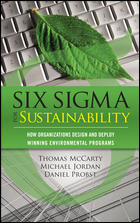Editor’s Note: This is part two of a three-part series.
The ‘scope’ of an accredited laboratory is a list of the different items the accrediting agency has determined they are capable of calibrating. In addition, it also lists their capability when doing so shown as the uncertainty involved using the instruments, masters, etc. they are using for each procedure.
This document provides a reference for finding labs to do your work. It can also be used to compare one lab to another for a performance comparison of them. This list is issued by the accrediting agency and is more important than the fancy certificate they issue indicating their recognition of a given lab. At least that’s the theory of it all. Like the list of your equipment mentioned earlier, the details on scopes are very important so an understanding of them is critical if they are to be of use to you. Here are some situations that illustrate this.
If you are sending your gage blocks out for calibration you would look for gage blocks to be included on the scope of the labs you are considering. But if your blocks are carbide, ceramic or chromium carbide, make sure the scope includes them. This is important since most gage block calibration is based on a 1:1 comparison process.
Most only cover steel blocks, the most used material, or in some cases, don’t indicate the material at all. In either case, if the material your blocks are made from is not indicated, talk to the lab to see how they will deal with this situation and what changes may occur in their uncertainty due to them.
As noted in previous columns, adjustable thread ring gages beyond 1.1/2"/39mm in diameter, or those with a special pitch diameter, or are standard with the exception they are left hand or multi-start threads, your list should indicate this as the lab may not have setting plugs to suit them to hand. If the lab says they will use a direct measurement to perform the calibration, get another source as this method is not a suitable substitute.
When comparing one lab’s uncertainty to another’s, consider what the numbers mean in the real world—and to you. There’s enough variation in technical assessments that result in unsettling differences one or more of them could be out to lunch so you can end up in a battle between accrediting agencies each maintaining their assessor is the correct one.
Another problem when looking at measurement uncertainty brings interesting but troubling things to light on occasion. This happens with pitch diameter measurements on thread plug gages. The actual uncertainty may be greater than the pitch diameter tolerance on the gage. These situations are something the industry is aware of and changes to published standards will balance things out in the future.
The next column will look at some of the mistakes made when looking at outside calibration sources and who will make the call when the process gets down to final decision making.



